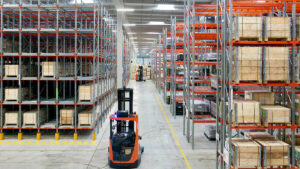In today’s era of climate change awareness, the construction sector stands out as a significant contributor to global greenhouse gas emissions, with embodied carbon emerging as a focal point for mitigation efforts. Embodied carbon refers to the carbon emissions associated with the production, transportation, and disposal of building materials throughout their lifecycle. Globally, the construction sector accounts for a substantial portion of emissions, with embodied carbon alone contributing to approximately 11% of total greenhouse gas emissions. In India, a country undergoing rapid urbanization and infrastructure development, the construction industry’s carbon footprint is particularly noteworthy, given its significant contribution to national emissions.
India’s construction sector plays a pivotal role in driving economic growth and meeting the infrastructure demands of a burgeoning population. However, this growth comes at a cost, with the construction industry being a major source of carbon emissions in the country. As India strives to achieve its climate goals and transition to a low-emissions economy, addressing embodied carbon in the construction sector becomes imperative. By reducing the carbon intensity of building materials and adopting sustainable construction practices, India has the potential to make significant strides towards mitigating climate change while simultaneously fostering economic development and resilience. Thus, the importance of addressing embodied carbon cannot be overstated, as it represents a crucial step towards building a more sustainable and equitable future for India and the planet.
Understanding Embodied Carbon in Construction Sector
Embodied carbon encapsulates the total carbon emissions associated with the entire lifecycle of building materials, spanning from extraction and manufacturing to transport, construction, and eventual disposal. This holistic approach to carbon accounting encompasses all stages of a material’s journey, highlighting the environmental impact of each phase. By quantifying embodied carbon, stakeholders gain a comprehensive understanding of the carbon footprint embedded within construction projects, enabling informed decision-making and targeted mitigation strategies.
It’s crucial to distinguish between embodied carbon and operational emissions in buildings. While operational emissions refer to the ongoing energy consumption during a building’s use phase, embodied carbon pertains to the upfront emissions associated with the production and transportation of construction materials. Unlike operational emissions, which occur over the building’s operational lifespan, embodied carbon emissions are “locked in” at the time of construction, making them a critical consideration for achieving long-term carbon reduction goals.
The significance of embodied carbon is underscored by its substantial contribution to global and India’s greenhouse gas (GHG) emissions. Globally, the construction sector accounts for a significant portion of total emissions, with embodied carbon alone comprising approximately 11% of the total. In India, a rapidly growing economy with extensive infrastructure development, the construction industry’s carbon footprint is particularly pronounced. As such, addressing embodied carbon becomes paramount for India’s efforts to curb emissions, mitigate climate change, and transition towards a low-carbon economy.
The Role of Embodied Carbon in India’s Emissions
India’s building sector is experiencing unprecedented growth, fueled by rapid urbanization, population expansion, and infrastructure development. As the country strives to meet the needs of its burgeoning population, the demand for construction materials is expected to skyrocket in the coming years. Projections indicate a substantial increase in the consumption of cement, steel, bricks, and other building materials, driven by ambitious construction projects and urban expansion initiatives.
In the context of India’s emissions profile, it’s essential to analyze the relative contributions of embodied and operational emissions. While operational emissions from buildings garner significant attention, the upfront carbon emissions associated with construction materials are often overlooked. However, in a country like India, where the construction industry is a major driver of economic growth and emissions, addressing embodied carbon becomes imperative. Tackling embodied carbon holds profound implications for India’s developmental and environmental goals. As a rapidly developing nation, India faces the dual challenge of meeting its infrastructure needs while mitigating climate change and environmental degradation. By prioritizing low-carbon construction practices and embracing sustainable building materials, India can achieve a harmonious balance between economic growth and environmental stewardship. Furthermore, reducing embodied carbon aligns with India’s broader objectives of sustainable development, resource efficiency, and climate resilience, paving the way for a greener and more sustainable future for generations to come.
Also learn about Net Zero House Design – Definition and Strategies
Case Study: International Approaches to Reducing Embodied Carbon
Australia’s Sustainable Construction Practices
Australia stands out as a leader in sustainable construction practices, implementing innovative strategies to mitigate embodied carbon emissions and promote environmental stewardship within the built environment. With a growing awareness of the environmental impact of construction materials, Australia has pioneered various initiatives aimed at reducing carbon intensity throughout the building lifecycle.
Emission Statistics: Australia’s construction industry contributes significantly to the nation’s overall carbon footprint, with embodied carbon emissions from building materials constituting a notable portion of total emissions. Statistics highlight the urgency of addressing this issue, driving stakeholders to explore alternative materials and construction methods to curb emissions.
Reduction Strategies: In response to the environmental challenges posed by embodied carbon, Australia has adopted a range of reduction strategies. One prominent approach involves the use of low-carbon concrete, which offers a more sustainable alternative to traditional concrete without compromising structural integrity. Additionally, the promotion of recycled and reclaimed materials has gained traction, providing viable options for reducing carbon intensity in construction projects.
Canada’s Sustainable Construction Practices
Canada has been at the forefront of sustainable construction practices, implementing initiatives to reduce embodied carbon emissions and promote environmental stewardship within the built environment. Through innovative technologies and collaborative partnerships, Canada has made significant strides in mitigating the environmental impact of construction activities while fostering economic growth and social development.
Emission Statistics: Canada’s construction sector accounts for a substantial portion of the nation’s greenhouse gas emissions, with embodied carbon from building materials contributing significantly to overall carbon intensity. Recognizing the environmental implications of construction materials, Canada has prioritized efforts to quantify and reduce embodied carbon throughout the building lifecycle.
Reduction Strategies: Canada has adopted a multifaceted approach to reducing embodied carbon emissions, encompassing various strategies such as material substitution, energy efficiency measures, and life cycle assessments. By leveraging sustainable building materials, such as mass timber and recycled aggregates, Canada has been able to achieve significant reductions in carbon intensity while promoting circular economy principles.
Calculating Embodied Carbon in Construction Sector
Life Cycle Assessment (LCA) and Environmental Product Declarations (EPDs)
LCA is a comprehensive method for assessing the environmental impacts associated with a product or process throughout its entire life cycle. Mainly from raw material extraction to disposal. It provides a holistic view of the environmental footprint, including embodied carbon emissions.
EPDs are standardized documents that communicate the environmental performance of products based on LCA data. They offer transparent information about a product’s embodied carbon and other environmental impacts, allowing stakeholders to make informed decisions.
Tools and Methodologies for Measuring Embodied Carbon
Various tools and methodologies exist for quantifying embodied carbon in construction materials and projects, including software applications and databases. These tools are designed to assess the carbon footprint of materials at different stages of the life cycle. Examples include:
- Tally: An LCA app that works with Autodesk Revit to calculate the environmental impact of building materials.
- One Click LCA: A comprehensive LCA tool for the construction industry, providing detailed carbon footprint assessments.
- Athena Impact Estimator for Buildings: A free software tool that evaluates the environmental impacts of building materials and assemblies.
Calculation Methods:
Common approaches include using material quantity takeoffs from construction estimates or Building Information Modeling (BIM) models. These approaches are coupled with data from EPDs to calculate embodied carbon emissions. These calculations are done by integrating detailed material quantities with verified environmental data. And these methods provide accurate assessments of a project’s embodied carbon footprint. It helps the team in enabling more informed decision-making in both design and procurement phases.
Explore more about BIM Execution Plan: A Comprehensive Overview
Managing Embodied Carbon using Embodied Carbon Cost Management
Embodied Carbon Cost Management refers to the process of quantifying and managing the financial implications associated with embodied carbon emissions in construction projects. It involves integrating carbon considerations into cost planning and decision-making processes to optimize both financial and environmental outcomes. By accounting for the costs associated with carbon emissions, construction projects can balance economic efficiency with sustainability goals. This approach encourages the use of low-carbon materials and sustainable construction practices. And it ultimately leading to a reduction in the overall carbon footprint of the construction industry.
In the Indian context, where the construction sector is experiencing rapid growth, Embodied Carbon Cost Management is particularly relevant. The Indian construction industry is expected to continue expanding, driven by urbanization, infrastructure development, and housing demands. This rapid growth presents both a challenge and an opportunity. While it could lead to increased carbon emissions, it also offers a chance to implement sustainable practices from the ground up. By incorporating carbon considerations into cost planning, stakeholders can identify opportunities to reduce emissions while minimizing project costs, aligning economic development with environmental responsibility.
An example of successful embodied carbon cost management can be seen in the Dalmia Bharat Group’s cement production. The company has adopted a low-carbon strategy by using alternative fuels and raw materials. And it significantly helped reducing the embodied carbon of their cement products. This approach has not only lowered emissions but also reduced production costs. It showcased the financial benefits of integrating carbon management into business operations. Such examples highlight the potential for the construction industry to achieve both economic and environmental gains through strategic embodied carbon cost management.
Strategies for Reducing Embodied Carbon
- Material Substitution:
- Encourage the adoption of low-carbon materials such as bamboo, timber, and recycled steel, which have lower embodied carbon compared to traditional materials like concrete and steel.
- Promote the use of carbon-neutral materials such as hempcrete, which sequesters carbon dioxide during its growth phase, offsetting emissions from other construction materials.
- Explore the potential of carbon-storing materials like bio-based composites and engineered wood products, which capture and store carbon throughout their lifecycle.
- Use of Recycled and Reclaimed Materials:
- Prioritize the use of recycled and reclaimed materials in construction projects to reduce the demand for virgin resources and minimize embodied carbon.
- Utilize recycled concrete aggregates, reclaimed timber, and salvaged materials from demolished buildings to decrease the environmental impact of construction activities.
- Implement policies and incentives to encourage the recycling and reuse of construction waste, diverting materials from landfills and reducing overall embodied carbon.
- Design Optimization:
- Emphasize modular construction techniques to minimize material waste and improve construction efficiency, thereby reducing embodied carbon.
- Utilize prefabricated components and off-site manufacturing to streamline construction processes and minimize on-site emissions.
- Incorporate principles of passive design, such as optimizing building orientation for solar gain and natural ventilation, to reduce the need for energy-intensive mechanical systems and further decrease embodied carbon.
- Innovations in Material Technology:
- Showcase examples of innovative material technologies developed by both global and Indian companies that offer low embodied carbon alternatives.
- Highlight advancements in sustainable concrete mixes, such as geopolymer and carbon-negative cements, which have lower emissions compared to traditional Portland cement.
- Feature emerging technologies like 3D printing of sustainable materials and carbon capture utilization and storage (CCUS) techniques that have the potential to revolutionize the construction industry’s approach to embodied carbon reduction.
Image from : https://www.researchgate.net/publication/356612114_Low-Carbon_Materials_Genesis_Thoughts_Case_Study_and_Perspectives
Policy and Market Initiatives
In the global arena, policymakers are increasingly recognizing the urgency of addressing embodied carbon in the construction sector. Initiatives such as US federal programs, including the Inflation Reduction Act and state-level “Buy Clean” laws, aims at incentivizing the use of low-carbon construction materials and reducing emissions across the supply chain. These measures drive market demand for sustainable products, encouraging manufacturers to innovate and disclose the environmental impacts of their materials.
However, in India, while there is a growing focus on sustainability in the construction sector, policy efforts predominantly target operational carbon rather than embodied carbon. There is a clear need for a comprehensive lifecycle approach that considers the full environmental impact of buildings from cradle to grave. Existing building codes such as the Energy Conservation Building Code (ECBC) primarily address energy efficiency during the operational phase. But it overlooks the significant emissions associated with material production and construction processes. To effectively tackle embodied carbon, India must update its policy framework to incorporate lifecycle considerations and set targets for reducing emissions across the entire building lifecycle.
Drawing lessons from global efforts, India can develop strategies to reduce embodied carbon and transition to a low-carbon construction industry. European initiatives such as geopolymer cement and carbon-neutral steel production demonstrate innovative approaches to emissions reduction that can be adapted to the Indian context. Additionally, Australia’s guidelines for high-blend cements and mineral carbonation offer valuable insights into sustainable material alternatives. Regulatory frameworks and market incentives play a crucial role in driving these efforts, highlighting the importance of aligning policy measures with India’s climate goals and encouraging industry-wide collaboration towards a greener built environment.
Tools and Resources for Reducing Embodied Carbon
The Embodied Carbon in Construction Calculator (EC3) tool is a cloud-based platform . It is designed to facilitate benchmarking, assessment, and reduction of embodied carbon in construction materials. By utilizing building material quantities from construction estimates or BIM models, EC3 incorporates a robust database of digital Environmental Product Declarations (EPDs). This allows users to accurately assess a project’s overall embodied carbon emissions. It also helps to identify low-carbon options during both the design and procurement phases. The impact of EC3 on the construction industry has been profound, driving a heightened demand for low-carbon solutions and incentivizing transparency and innovation among material manufacturers and suppliers. This tool promotes the adoption of sustainable practices and supports the industry’s transition towards a more eco-friendly future.
The Indian Green Building Council (IGBC) is a leading organization promoting sustainable building practices in India. The IGBC’s Net Zero Carbon Rating is a certification program by the organization. It specifically aims at reducing the embodied carbon footprint of construction projects. This program sets comprehensive criteria for minimizing embodied carbon emissions throughout the project lifecycle. It includes material sourcing to disposal, thereby encouraging the adoption of sustainable construction practices and the use of low-carbon materials. Indian construction projects aiming for IGBC certification benefit from enhanced environmental performance, improved marketability, and recognition for their commitment to reducing embodied carbon emissions. This certification helps in meeting stringent environmental standards and positions projects as leaders in sustainability. And this helps in attracting environmentally conscious stakeholders ands customers to the company.
Learn more about Green Building: Regulations and Certifications
Challenges and Opportunities in India
India faces significant hurdles in tackling embodied carbon emissions due to the lack of a comprehensive lifecycle approach in existing policies and regulations. The absence of specific guidelines and standards focusing on embodied carbon limits the effectiveness of efforts to reduce emissions across the construction sector. Moreover, the industry remains fragmented, with various stakeholders operating independently, hindering cohesive action toward carbon reduction goals.
Despite these challenges, there are ample opportunities for decarbonization through collaborative efforts among government bodies, industry players, and civil society organizations. By fostering partnerships and dialogue, stakeholders can develop innovative strategies and initiatives to address embodied carbon emissions effectively. Collaborative approaches enable the sharing of knowledge, resources, and best practices, facilitating the implementation of sustainable solutions across the construction value chain.
Examples of Industry Leaders and Initiatives:
Dalmia Cement
Dalmia Cement has taken significant steps towards reducing its carbon footprint by investing in alternative fuels and raw materials, energy-efficient technologies, and renewable energy sources. The company has committed to becoming carbon negative by 2040, making it a leader in sustainable practices within the cement industry. Dalmia Cement’s efforts include using waste-derived fuels and increasing the use of blended cements, which have lower embodied carbon compared to traditional Portland cement.
Ultratech Cement
Ultratech Cement, another major player in the Indian construction industry, has set ambitious sustainability targets. The company focuses on reducing its carbon intensity through various initiatives such as increasing the use of alternative raw materials and fuels, enhancing energy efficiency, and investing in renewable energy. Ultratech’s strategies include the use of slag and fly ash in cement production, which significantly lowers the embodied carbon of their products.
Mahindra Lifespaces
Mahindra Lifespaces, a pioneer in sustainable urban development, integrates green building practices into its projects. The company has implemented measures to reduce embodied carbon. They are mainly by using sustainable materials, optimizing design for resource efficiency, and incorporating renewable energy solutions. Mahindra Lifespaces is also actively involved in promoting green building certifications, such as IGBC and LEED, which encourage the adoption of low-carbon construction practices.
Addressing Embodied Carbon in India’s Construction Sector
Addressing embodied carbon in India’s construction sector stands as an imperative task crucial for meeting both national and global climate goals. With the construction industry’s substantial contribution to greenhouse gas emissions, particularly in India, there is an urgent need to implement strategies that effectively reduce embodied carbon across the building lifecycle.
This call to action necessitates the active participation of Indian stakeholders in the construction industry. Through the adoption of sustainable practices, the utilization of innovative technologies, and the cultivation of collaborative efforts across various sectors, stakeholders can play a pivotal role in driving significant change. Moreover, by reducing embodied carbon, we pave the way towards achieving net-zero emissions in India, offering a promising future where construction activities align harmoniously with environmental preservation and climate resilience.





